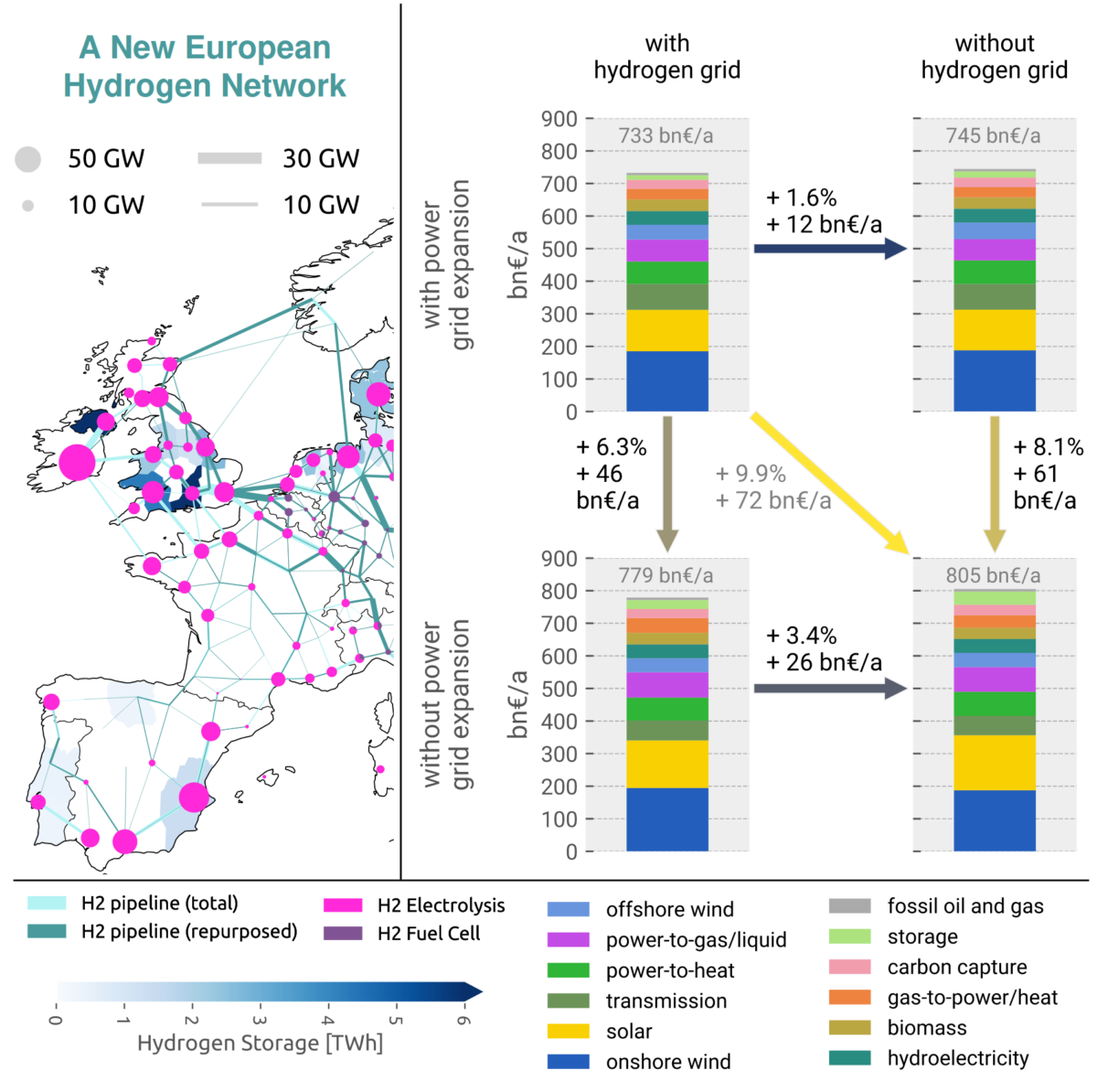Technische Universität Berlin researchers say a hydrogen network connecting regions with low-cost renewable potential to demand centers, electrofuel production, and cavern storage sites in Europe could reduce system costs by up to €26 billion ($29.2 billion) a year. “The presence of a new hydrogen network can reduce system costs by up to 3.4%,” wrote the researchers. They say that between 64% and 69% of the hydrogen network could reuse gas pipelines and that expanding both the hydrogen network and the power grid would help meet net-zero emission targets, cutting costs by 9.9%, or €72 billion per year.
PlasmaLeap Technologies has showcased its green ammonia technology, a new plasma-driven path to ammonia synthesis, to Australian authorities. The ammonia reactor uses only air and water in plasma activation, leading to nitrogen oxides in solution, then used in electrochemical conversion to produce ammonia. “PlasmaLeap Technologies is on track to achieve energy efficiency rates of 20 kWh/kg ammonia in its large-scale reactors by the end of 2023,” said the Australian startup, adding that the technology provides on-demand zero-emissions ammonia feedstock for agriculture.
Ireland has published its national hydrogen strategy, focusing on hydrogen for hard-to-decarbonize sectors. “Prior to 2030, hydrogen will be produced from grid-connected electrolysis from surplus renewables,” said the Irish government, adding that the country will work on a 2 GW target of offshore wind for renewable hydrogen production by 2030. Heavy-duty transport applications are anticipated to be the first end-use sectors to develop, followed by industry and flexible power generation.Aviation and maritime are expected to be large high-priority end-users, but these sectors will take longer to develop, the government said. Industrial heating from hydrogen is expected to start in 2033 and hydrogen exports after 2038.
Popular content
HPS Home Power Solutions has inaugurated the “world’s first grid-serving solar hydrogen house” with a full thermal and electrical supply near Berlin. Built as part of the “FlexEhome” research project funded by the German government, the house tests grid-serving performance, said said HPS Home Power Solutions. “Electricity is only given to or taken from the grid when it serves the grid,” it added, noting larger storage capacity compared to batteries and loss-free storage over longer periods.
The European Commission has published a call for expression of interest to set up a list of independent experts to assist the Fuel Cells and Hydrogen 2 Joint Undertaking for tasks concerning the European Hydrogen Safety Panel. “The European Hydrogen Safety Panel will be composed of a multidisciplinary pool of experts (15-20 approx.) grouped in small ad-hoc working groups (task forces) according to the tasks to be performed and expertise,” said the contracting authority.
This content is protected by copyright and may not be reused. If you want to cooperate with us and would like to reuse some of our content, please contact: editors@pv-magazine.com.


2 comments
By submitting this form you agree to pv magazine using your data for the purposes of publishing your comment.
Your personal data will only be disclosed or otherwise transmitted to third parties for the purposes of spam filtering or if this is necessary for technical maintenance of the website. Any other transfer to third parties will not take place unless this is justified on the basis of applicable data protection regulations or if pv magazine is legally obliged to do so.
You may revoke this consent at any time with effect for the future, in which case your personal data will be deleted immediately. Otherwise, your data will be deleted if pv magazine has processed your request or the purpose of data storage is fulfilled.
Further information on data privacy can be found in our Data Protection Policy.